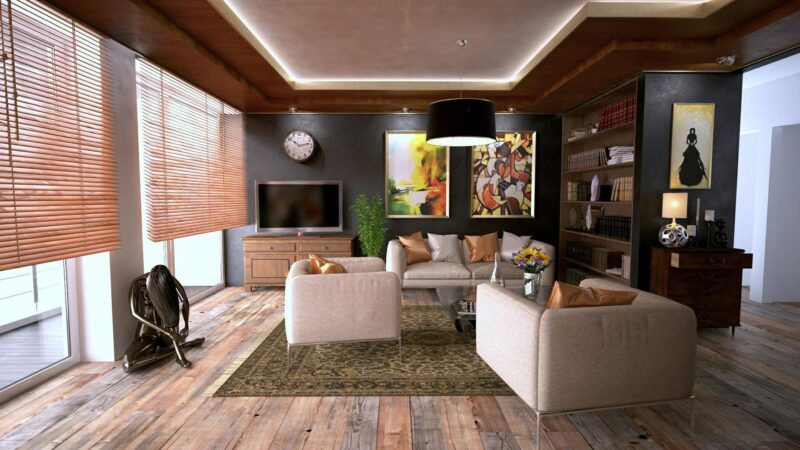
Architects today face the challenge of unlocking the potential of rooftop spaces, which often remain underutilized due to accessibility issues. The lack of a proper solution can hinder the realization of rooftop gardens, recreational areas, or safe maintenance access. The answer lies in the often-overlooked world of roof hatches.
Here are five factors you should consider when choosing the perfect roof hatches for your projects.
Exploring Diverse Roof Hatch Options and Their Tailored Uses
Roof hatches come in various sizes, designs, and functions, allowing architects to choose the best fit for the building and its occupants. Here are four common types to consider.
-
Standard Roof Hatch
These hatches are the standard choice for many projects. They’re mainly used for rooftop maintenance access, offering a safe and secure entry for technicians and maintenance staff.
-
Roof Hatch with a Fixed Ladder
For buildings that need regular rooftop access, like utility facilities or industrial spaces, roof hatches with built-in fixed ladders offer a convenient and permanent access solution.
-
Roof Hatch with a Scissor Stair
Scissor stairs can be a great option in tight spaces. These hatches blend a small footprint with the functionality of an integrated staircase, making them ideal for smaller buildings or cramped rooftop spaces.
-
Roof Hatch with an Electric Lifting System
When architects prioritize maximum convenience, electrically operated roof hatches become valuable. They work well for buildings with heavy rooftop traffic, providing easy and controlled access at the touch of a button.
Tailoring Solutions to Diverse Building Types and Unique Requirements
The selection of a roof hatch also relies on the building’s type and intended purpose. Think about these four distinct settings to help you confidently pick the ideal style for your project.
-
Commercial Buildings
For office complexes, retail spaces, or mixed-use buildings, standard roof hatches or electrically operated hatches can often meet maintenance and occasional access requirements effectively.
-
Industrial Facilities
In industrial settings with frequent rooftop maintenance and equipment access, hatches with integrated ladders or scissor stairs are often the most practical choice. For elevated tasks, scissor lift rental in Dallas provides an additional convenient and efficient solution.
-
Residential Structures
Heavy-duty hatches may not be necessary for rooftop access in residential buildings. Compact and visually appealing options that provide limited access can be more suitable.
-
Public Spaces
Public spaces such as museums, galleries, or cultural centers can benefit from roof hatches designed to prioritize aesthetics and seamlessly blend with the building’s overall design.
Selecting Weather-Resistant Materials for Roof Hatches
Various materials offer distinct advantages, making the choice of material crucial in maintaining the functionality and appearance of rooftop access solutions. Here are three common materials to consider.
-
Aluminum
Architects often use aluminum roof hatches due to their exceptional corrosion resistance. For example, the BA-ALRF-LA aluminum roof hatch is lightweight and sturdy, making it suitable for different climates. Anodized or powder-coated finishes can improve its weather resistance and enhance its visual appeal.
-
Galvanized Steel
Galvanized steel roof hatches offer exceptional durability. They are coated with a layer of zinc to protect against rust and corrosion, making them the best choice for buildings in regions with high humidity or exposure to saltwater.
-
Stainless Steel
Stainless steel stands as the ultimate material for weather resistance. It boasts unmatched corrosion resistance, making it a prime selection for roof hatches in coastal or industrial settings. Stainless steel hatches are also highly durable and demand minimal maintenance.
Understanding the Impact of Environmental Factors
Weather patterns, temperature fluctuations, and exposure to different elements all play a role in evaluating the durability and resilience of your rooftop access solution. Awareness of these factors will help you choose the most appropriate materials to withstand the toughest conditions your building may encounter. Here are four environmental factors to consider.
-
Climate
The local climate has a significant impact on material selection. Buildings in heavy rainfall or extreme temperature fluctuations need materials to endure these conditions. Stainless steel and galvanized steel hatches are especially well-suited for challenging climates.
-
Salt Exposure
Buildings located near coastlines face exposure to saltwater, which can speed up corrosion. Roof hatches in these areas benefit from materials such as stainless steel or aluminum with specialized coatings designed to resist salt-induced corrosion.
-
Pollution and Industrial Emissions
Urban areas with elevated pollution levels or industrial emissions can harm the longevity of roof hatches. Choosing strong, corrosion-resistant materials is crucial in such environments to prevent deterioration over time.
-
UV Radiation
Exposure to sunlight and UV radiation is a default for rooftop surfaces. Consider using UV-resistant coatings or finishes to shield the roof hatch from UV-induced degradation and maintain its appearance and functionality.

Prioritizing Safety And Enhancing Accessibility
Safety regulations and standards are crucial in rooftop access design. Architects must ensure that roof hatches meet these requirements to ensure the safety of maintenance personnel and occupants during emergencies.
Additionally, enhancing accessibility is vital. Offering safe and efficient access to the rooftop ensures that maintenance tasks are performed effectively and with minimal risk. A well-designed roof hatch not only ensures safety but also streamlines maintenance operations.
To Wrap Up
Roof hatches are the gateway to unlocking the full potential of the rooftop spaces, providing access for maintenance, safety, and even recreational purposes. With the right roof hatch, your architectural visions can reach new heights—transforming rooftops into functional, beautiful, and safe spaces that leave a lasting impression.












